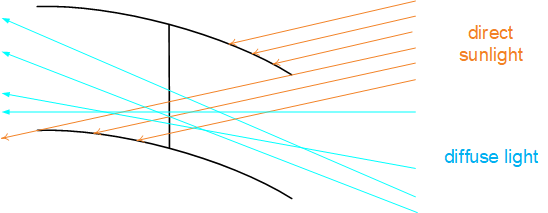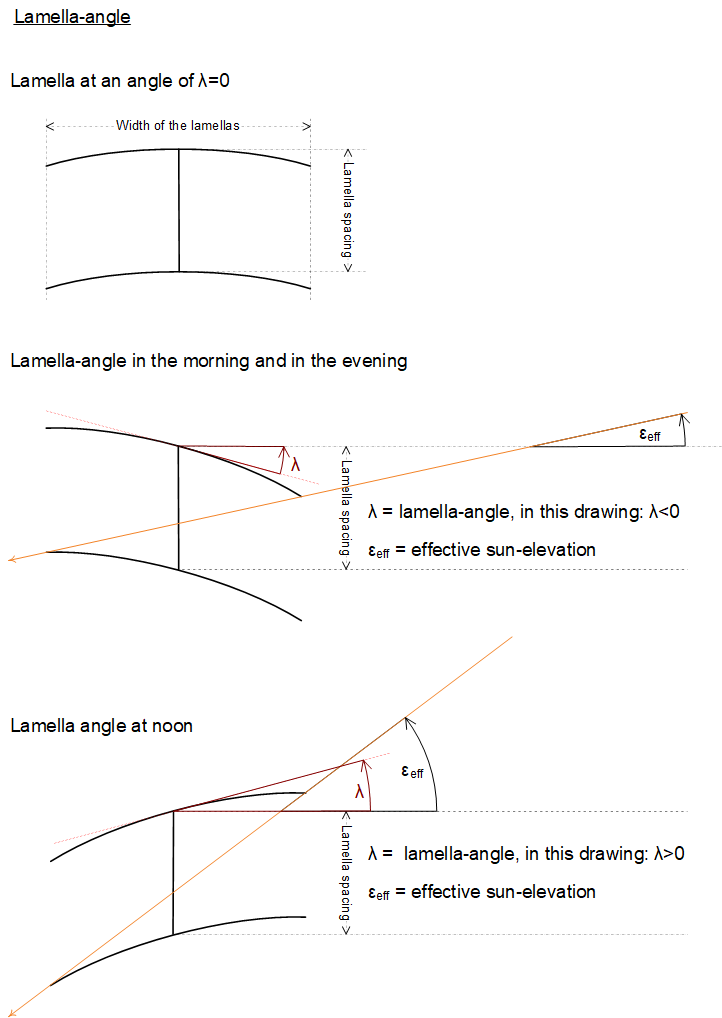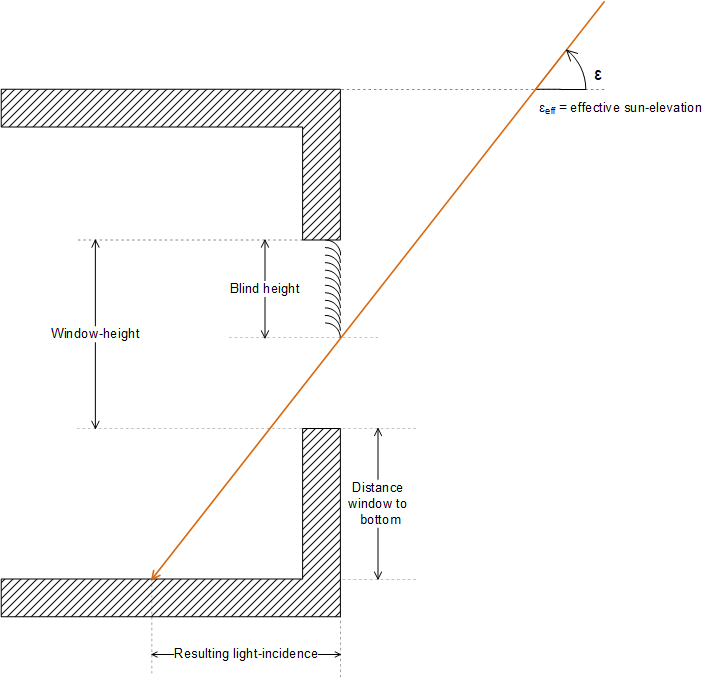Sun protection: Basic principles and definitions
The direct incidence of daylight is regarded as disturbing by persons in rooms. On the other hand, however, people perceive natural light to be more pleasant in comparison with artificial light. Two options for glare protection are to be presented here:
- Louvre adjustment
- Height adjustment
Lamella setpoint tracing
A blind with lamellas that can be adjusted offers the option of intelligent sun protection here. The position of the lamellas is cyclically adapted to the current position of the sun, so that no direct daylight enters through the blinds, but as much diffuse daylight can be utilized as possible.

The illustration shows that diffuse light can still enter from underneath, whereas no further direct daylight, or theoretically only a single ray, can enter. The following parameters are necessary for the calculation of the lamella angle:
- the current sun elevation (elevation angle)
- the sun position, i.e. the azimuth angle
- the facade orientation
- the lamella width
- the lamella spacing
Effective elevation angle
If the blind is viewed in section as above, the angle of incidence does not depend solely on the sun elevation, but also on the direction of the sun:
- If the facade orientation and the sun position (azimuth) are the same, i.e. the sunlight falls directly onto the facade, the effective light incidence angle is the same as the current elevation angle.
- However, if the sunlight falls at an angle onto the facade as seen from the sun direction, the effective angle is larger for the same elevation angle.
This relationship can easily be illustrated with a set square positioned upright on the table: Viewed directly from the side you can see a triangle with two 45° angles and one 90° angle. If the triangle is rotated, the side on the table appears to become shorter and the two original 45° angles change. The triangle appears to be getting steeper.
We therefore refer to the "effective elevation angle", which describes the proportion of light that falls directly onto the blind.
The following three images illustrate the relationship between the effective elevation angle and the blind dimensions, and how the resulting lamella angle λ changes during the day:

Height adjustment
With a high position of the sun at midday, the direct rays of sunlight do not penetrate into the full depth of the room. If direct rays of sunlight in the area of the window sill are regarded as uncritical, the height of the sun protection can be adapted automatically in such a way that the rays of sunlight only ever penetrate into the room up to an uncritical depth.

In order to be able to calculate at any time the appropriate blind height that guarantees that the incidence of sunlight does not exceed a certain value, the following values are necessary.
Required for the calculation of the respective blind height:
- Sun elevation
- Window height
- Distance between the window and the floor
The following illustration shows where these parameters are to be classified:

Influence of the facade inclination
In both of the methods of sun protection described, it was assumed that the facade and thus the windows are perpendicular to the ground. In the case of an inclined facade, however, the incidence of light changes such that this influence will also be taken into account. The facade inclination is defined as follows:
